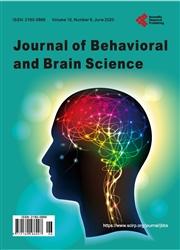Δ9-Tetrahydrocannabinol Produced Positive Place Preference in Mice without Significant Ex-Vivo Effect on Hepatic Arylamine N-Acetyltransferase Activity: Implications for Its Addictive Liability and Absence of Effect on Xenobiotic Metabolism
引用次数: 0
Abstract
Aim: Δ9-Tetrahydrocannabinol (Δ9-THC) is a potentially addictive cannabinoid. Its impact on the activity of liver arylamine N-Acetyltransferase (NAT) has not been reported. This study investigated the rewarding effects of Δ9-THC in mice and whether Δ9-THC had any impact ex-vivo and in-vitro on NAT activity. Methods: Thirty-six Swiss albinomice randomly assigned to six groups (n = 6) completed a biased, 8-week Conditioned Place Preference (CPP) paradigm. Mice exhibiting ~80% preference for the black chamber at pre-conditioning were selected. Treatment groups were administered Δ9-THC (0.10, 0.50 or 2.0 mg/kg/mL, ip) or amphetamine (AMP, 5.0 mg/kg/mL, ip); while untreated groups (controls) received vehicle solutions (coconut oil or 0.9% saline). Entries and time spent in the white, drug-paired chamber during a 15-min post-conditioning exploration of the CPP apparatus were compared with the pre-conditioning exploratory scores. Livers from Δ9-THC treated and untreated mice were excised and NAT enzyme activity determined ex-vivo using a spectrophotometric assay with p-anisidine as substrate. The impact of varying concentrations of Δ9-THC (0.00 - 162 μM) on the activities of NAT from untreated mice livers were also investigated in-vitro. Results: Δ9-THC treated mice entered and spent significantly more time in the drug-paired CPP chamber (p ≤ 0.05) at post-conditioning vs pre-conditioning (F = 11.22). Mice treated with 2.0 mg/kg Δ9-THC made significantly more entries into the drug-paired chamber (p ≤ 0.05) as compared with their vehicle controls. AMP-treated mice displayed significant (p In-vitro NAT evaluations revealed a dose-dependent inhibitory impact of Δ9-THC on NAT activity with an IC50 value of 34.97 ±1.58 μM. Ex-vivo evaluations of livers from Δ9-THC treated mice showed no significant impact on liver NAT enzyme activity. Conclusion: Δ9-THC induced significant conditioned place preference (drug reward) and produced a moderate dose-dependent inhibition on NAT activity in-vitro, but not ex-vivo.Δ9-Tetrahydrocannabinol在小鼠中产生积极的位置偏好,但对肝脏芳胺n -乙酰转移酶活性没有显着的离体影响:其成瘾性和对外源代谢没有影响的意义
目的:Δ9-四氢大麻酚(Δ9-THC)是一种潜在的成瘾性大麻素。其对肝脏芳胺N-乙酰转移酶(NAT)活性的影响尚未报道。本研究调查了Δ9-THC在小鼠中的奖励作用,以及Δ9-THC是否对NAT活性有任何体内外影响。方法:36名瑞士白化病患者随机分为6组(n=6),完成了一个有偏见的8周条件地点偏好(CPP)范式。选择了在预处理时对黑匣子表现出约80%偏好的小鼠。治疗组给予Δ9-THC(0.10、0.50或2.0 mg/kg/mL,ip)或苯丙胺(AMP,5.0 mg/kg/mL);而未治疗组(对照组)接受载体溶液(椰子油或0.9%盐水)。将CPP装置调节后15分钟探索期间在白色药物配对室中花费的条目和时间与调节前探索得分进行比较。切除Δ9-THC处理和未处理小鼠的肝脏,并使用对茴香胺为底物的分光光度测定法体外测定NAT酶活性。不同浓度的Δ9-THC(0.00-162μM)对未经处理的小鼠肝脏NAT活性的影响也在体外进行了研究。结果:与预处理(F=111.22)相比,经Δ9-THC处理的小鼠在预处理后进入药物配对CPP室的时间明显更长(p≤0.05)。与载体对照组相比,经2.0 mg/kgΔ9-THC处理的小鼠进入药物配对室的时间显着更多(p≤0.05%)。AMP处理的小鼠显示出显著的(p体外NAT评估显示Δ9-THC对NAT活性具有剂量依赖性的抑制作用,IC50值为34.97±1.58μM。Δ9-THC处理的小鼠肝脏的离体评估显示对肝脏NAT酶活性没有显著影响对NAT活性的体外剂量依赖性抑制,但不是离体抑制。
本文章由计算机程序翻译,如有差异,请以英文原文为准。
求助全文
约1分钟内获得全文
求助全文

 求助内容:
求助内容: 应助结果提醒方式:
应助结果提醒方式:


